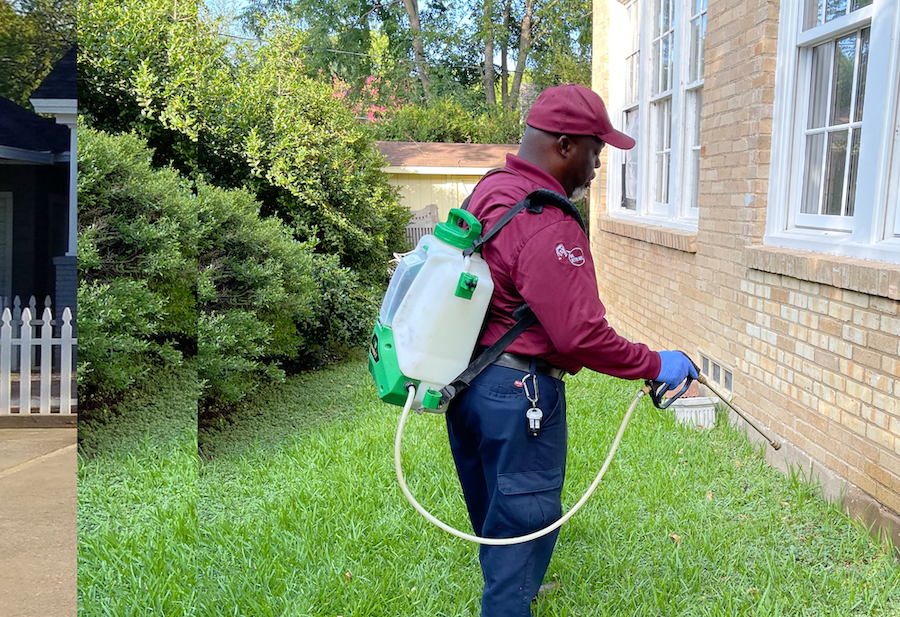Same-day and reliable Pest Control for peace of mind.
Same-day and reliable Pest Control for peace of mind.
Blog Article
Eco-Friendly Parasite Control Approaches for Handling Wildlife in Urban Locations
Urban locations frequently discover themselves at the junction of human activity and wild animals, leading to distinct difficulties in insect monitoring. These approaches not only protect the environment however likewise enhance community engagement in wildlife management. As city populaces proceed to expand, understanding the characteristics of wild animals communications becomes significantly essential.
Recognizing Urban Wildlife Dynamics
Recognizing Urban Wildlife Characteristics is important for establishing efficient and environmentally friendly parasite control strategies. Urban locations are significantly coming to be habitats for different wildlife species, driven by elements such as environment fragmentation, food accessibility, and human infringement. Recognizing these dynamics enables a nuanced technique to pest monitoring that lines up with eco-friendly principles.
Urban wild animals commonly consists of varieties such as raccoons, squirrels, and birds, which adapt to city environments, finding niches in green spaces, parks, and even houses. Their presence can lead to disputes with human beings, specifically when they manipulate human sources for food and sanctuary. Recognizing the habits and ecological functions of these species notifies approaches that decrease adverse communications while advertising biodiversity.
Additionally, recognizing the interdependencies within metropolitan communities assists in recognizing vital areas for habitat preservation and repair. This understanding adds to the development of incorporated bug management (IPM) techniques that consider the eco-friendly equilibrium, consequently reducing reliance on unsafe chemicals. By promoting coexistence between human beings and city wildlife, cities can develop much healthier environments that profit both locals and neighborhood ecosystems, leading the way for lasting metropolitan living.
Natural Repellents and Deterrents
Natural repellents and deterrents supply a lasting option to standard bug control approaches by taking advantage of the power of nature to keep unwanted types at bay. These green remedies usually make use of plant-based components, necessary oils, and other normally occurring compounds that discourage parasites without damaging the atmosphere.
One efficient natural repellent is peppermint oil, which is understood to drive away rodents and pests. Its strong scent is unpleasant to numerous bugs, making it a preferred selection for metropolitan settings. In a similar way, vinegar and citrus peels can act as deterrents, as their strong smells are normally uninviting to different wildlife.
Additionally, diatomaceous earth is a natural powder that can be spread in areas vulnerable to bug task, effectively drying out and hindering bugs without posing threats to non-target species. Furthermore, garlic sprays and neem oil are recognized for their ability to drive away a variety of parasites, consisting of both pests and larger wild animals.
Implementing these natural repellents not just Misting Systems Pest Control reduces reliance on chemical pesticides but also advertises a much healthier city ecosystem, cultivating a much more balanced conjunction in between humans and wildlife. By utilizing these strategies, metropolitan locations can effectively manage insect populaces while decreasing ecological effect.
Environment Adjustment Techniques
Reliable environment adjustment techniques play an essential function in sustainable parasite monitoring by changing the atmosphere to make it less for pest infestations. By comprehending the environmental characteristics of metropolitan locations, homeowner can execute calculated adjustments that prevent insects while promoting biodiversity.
(Flea control Port Charlotte)One primary method entails keeping correct cleanliness. This consists of routine waste removal, safeguarding trash can, and eliminating standing water to lower reproducing websites for insects and rats. In addition, landscaping techniques such as selecting indigenous plants can enhance eco-friendly equilibrium, providing habitats for beneficial organisms while lessening resources for parasites.
An additional important method is to secure entrance points in buildings. Inspecting and fixing fractures in structures, wall surfaces, and windows can significantly minimize parasite gain access to. Moreover, producing physical barriers, such as fencings or plant buffers, can hinder wild animals movement into human-inhabited locations.
Integrated Bug Monitoring Practices
Structure upon environment modification methods, incorporated insect monitoring (IPM) techniques supply an alternative technique to regulating pest populaces while minimizing ecological influence. IPM combines various strategies, including biological, cultural, mechanical, and chemical controls, to accomplish reliable bug monitoring.
Organic control involves the intro of all-natural killers or parasites to reduce bug populations. Cultural methods, such as plant rotation and cleanliness, interrupt pest life cycles and lessen their environments - Pest Control. Mechanical controls, like catches and obstacles, provide instant relief from insect pressures without chemical treatment
Chemical controls are used as a last resort, concentrating on targeted applications that limit harm to non-target types and the environment. The option of eco pleasant pesticides, when needed, is indispensable to the IPM structure. Additionally, keeping track of pest populations and evaluating prospective damage helps educate decision-making, guaranteeing that interventions are timely and effective.
Community Participation and Education

(Mosquito control Port Charlotte)Workshops and informational sessions can furnish locals with expertise regarding indigenous species, environment conservation, and effective non-toxic insect administration techniques. Partnership with institutions, regional organizations, and government agencies further boosts educational outreach, making sure that important info reaches diverse audiences.
Moreover, community-led initiatives, such as area clean-up days and environment remediation tasks, not just advertise biodiversity however likewise enhance neighborhood ties. Pest Control. By urging locals to share their experiences and observations, neighborhoods can establish targeted approaches that address particular local pest concerns
Including responses from residents right into pest management plans allows a much more responsive and adaptive approach to wildlife challenges. Inevitably, notified and engaged neighborhoods are essential to attaining long-term success in green pest control, resulting in healthier urban environments that value both human and environmental needs.

Verdict
To conclude, green parasite control comes close to deal lasting options for managing city wild animals. By focusing on environment adjustment, utilizing natural repellents, and executing incorporated pest monitoring techniques, areas can promote a harmonious coexistence with regional fauna. Involving citizens with education improves awareness and motivates accountable wild animals interactions. Inevitably, these strategies not just secure biodiversity however also promote ecological wellness, guaranteeing city areas remain lively communities where people and wild animals grow together.
Report this page